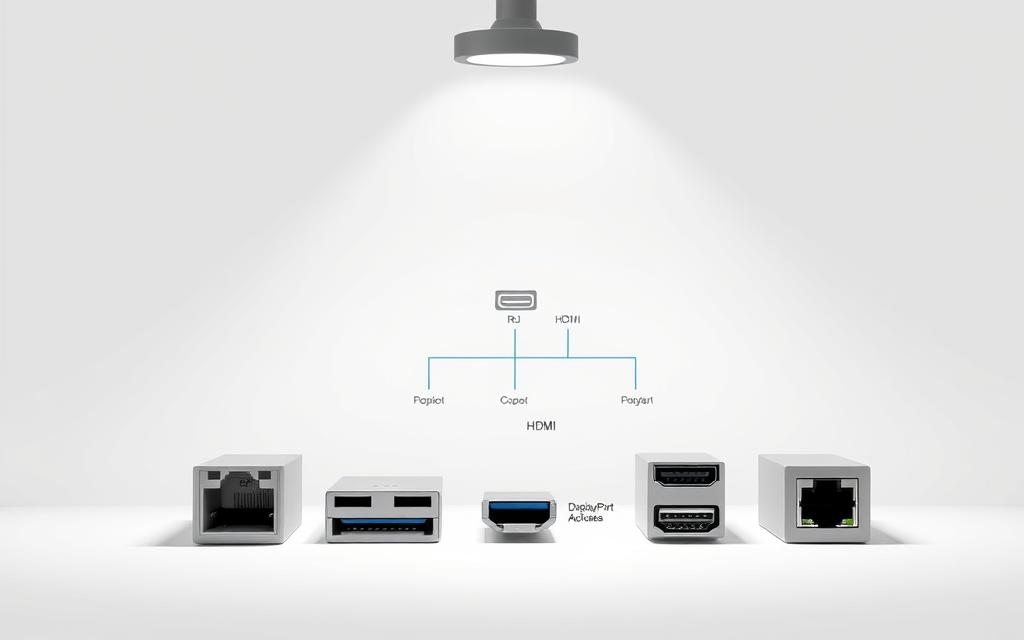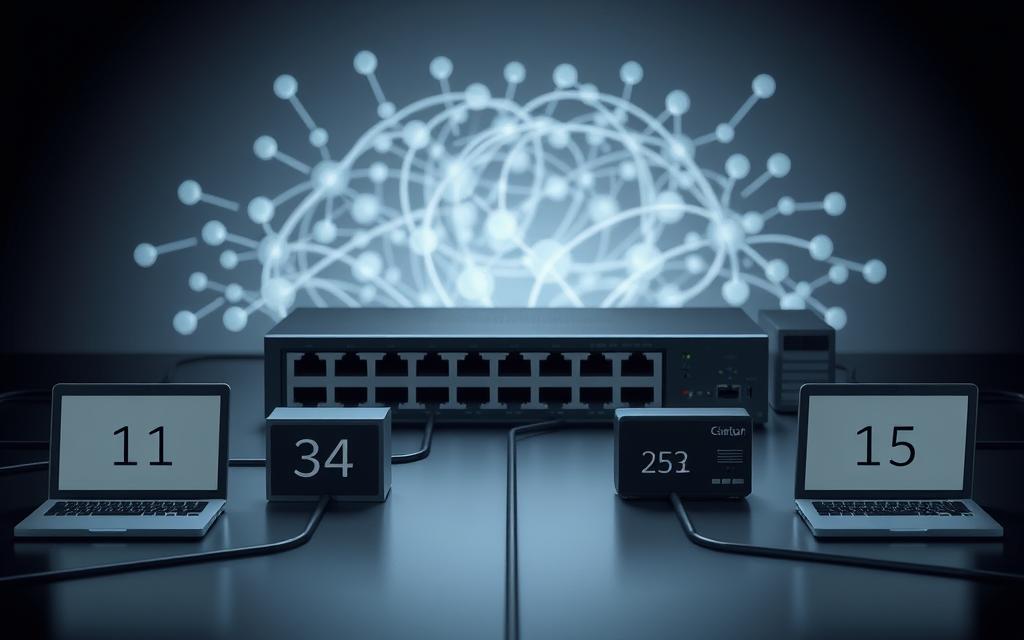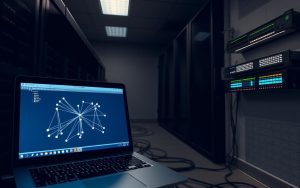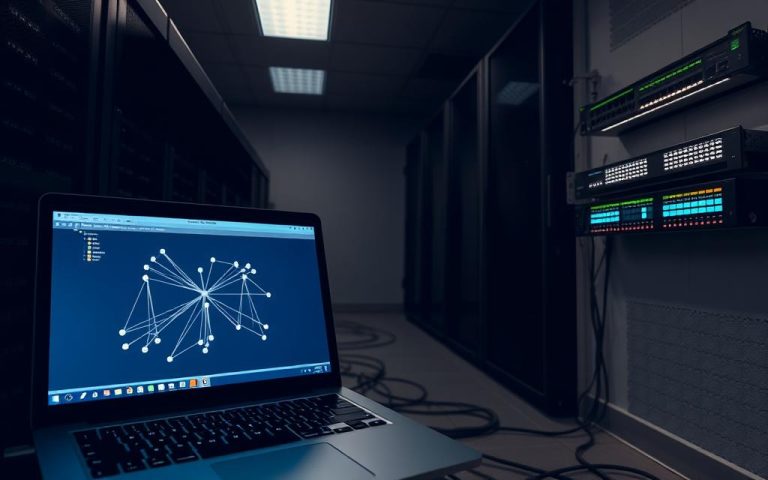Port Addressing in Networking: What It Is & Why It Matters
Port addressing is vital for routing data between devices in computer networks. It uses port numbers as digital addresses for targeted network interactions. These numerical identifiers help computers manage multiple network connections efficiently.
Port numbers range from 0 to 65,535, offering a 16-bit number space. This supports various network services. Each port acts as a dedicated channel for specific processes to exchange data seamlessly.
Different port ranges serve unique purposes in network communication. Well-known ports (0-1023) are for standard services like web browsing and email1. Registered ports (1024-49,151) provide options for specialised software needs.
Port addressing knowledge is crucial for network admins and cybersecurity experts. It helps organisations implement robust security measures. Understanding ports also allows for optimising network performance effectively.
What is a port address in a computer network?
Port addresses are vital for managing digital communication in computer networking. These unique identifiers route data between applications and services across networks. They’re essential for smooth digital interactions.
Port numbers are 16-bit integers that identify specific services and applications. There are 65,535 port numbers available, divided into three main categories23:
- Well-known ports (0-1023): Reserved for prominent services and standard protocols
- Registered ports (1024-49151): Assigned to specific software companies
- Dynamic/private ports (49152-65535): Available for general use
Understanding Port Numbers and Their Functions
Port numbers work with IP addresses to ensure precise network communication. IP addresses identify specific machines. Port numbers pinpoint exact applications or services on that device3.
| Port Number | Service/Protocol |
|---|---|
| 80 | HTTP Web Traffic |
| 443 | HTTPS Secure Web Traffic |
| 22 | SSH Secure Shell |
| 25 | SMTP Email Transfer |
The Importance in Network Protocols
TCP/IP network protocols use port numbers to manage multiple simultaneous network connections. The Internet Assigned Numbers Authority (IANA) oversees port number registrations. This ensures standardisation and prevents conflicts3.
Port numbers are the postal codes of digital communication, ensuring messages reach their precise destination.
Types of Network Ports and Their Classifications
Network ports are vital for smooth communication across digital networks. Port classification is key to managing network communications effectively4. The port numbering system includes 65,535 unique ports, divided into three main categories5.

- Well-Known Ports (0-1023): These are reserved for standardised services and system-critical functions4. Examples include:
- Port 80 for HTTP
- Port 443 for HTTPS
- Port 22 for SSH
- Registered Ports (1024-49151): Available for user applications and processes registered with IANA4. These ports support less common but essential network services.
- Dynamic/Private Ports (49152-65535): Open for temporary connections and freely assignable by any application4.
Grasping these port classifications aids network admins in managing communication channels efficiently. It also helps in implementing strong security measures5.
Different protocols like TCP and UDP use these port ranges. This ensures precise data routing and service identification.
Port Addressing in Network Security
Port management is vital for network security. Cybersecurity experts must grasp its complex workings to safeguard organisational networks. This knowledge helps protect against potential vulnerabilities6.
Understanding Port Scanning Techniques
Port scanning is crucial for network security assessment. It helps find open network paths and potential entry points. The process checks ports from 0 to 65535, revealing accessible services6.
- Identifies potential network vulnerabilities
- Reveals open communication channels
- Helps assess network security posture
Firewall Configuration Strategies
Proper firewall setup is key to network security. Admins must carefully control port access to prevent unauthorised intrusions. NAT technology adds security by hiding internal systems behind one public IP7.
- Close unnecessary ports
- Implement default-deny policies
- Use non-standard ports for critical services
Best Practices for Port Security
Strong port security needs a layered approach. Network pros should focus on least privilege principles. This ensures only essential ports stay open.
Critical protocols like SSH and HTTPS need special attention. Specific ports should be set aside for secure communication6.
Grasping port addressing details helps organisations boost their cybersecurity defences. This knowledge is crucial for reducing potential network threats.
TCP/IP Port Implementation and Usage
TCP/IP is a vital communication framework for network applications. Socket programming creates robust network channels using IP addresses and port numbers8. These sockets enable virtual communication between hosts, allowing seamless data transmission across networks9.
Network communication relies on precise port management. TCP establishes reliable connections through specific9. The Berkeley Sockets API offers functions like `socket()`, `bind()`, and `connect()` for efficient network connection management8.
Port forwarding allows external access to services on private networks. Ephemeral ports (1024-65535) support dynamic client-side communications8. Web servers manage multiple sockets, using unique destination port numbers to serve various requests concurrently8.
Grasping TCP/IP port implementation helps optimise communication strategies. The protocol’s compatibility ensures widespread adoption in modern networking environments9. Mastering socket programming techniques enables organisations to build resilient network infrastructures.
FAQ
What exactly is a port address in networking?
How many port numbers are available in total?
What is the difference between an IP address and a port number?
Which ports are used by common internet services?
How do ports contribute to network security?
What is port scanning?
What is port forwarding?
Who manages port number assignments?
What are socket connections?
Why are some ports considered well-known?
Source Links
- https://www.techtarget.com/searchnetworking/definition/port
- https://www.techtarget.com/searchnetworking/definition/port-number
- https://en.wikipedia.org/wiki/Port_(computer_networking)
- https://www.link11.com/en/glossar/network-port/
- https://www.geeksforgeeks.org/what-is-ports-in-networking/
- https://www.scaler.in/what-is-port/
- https://help.it.ox.ac.uk/network-and-port-address-translation-nat/pat
- https://developerhelp.microchip.com/xwiki/bin/view/applications/tcp-ip/sockets-ports/
- https://www.techtarget.com/searchnetworking/definition/TCP-IP







